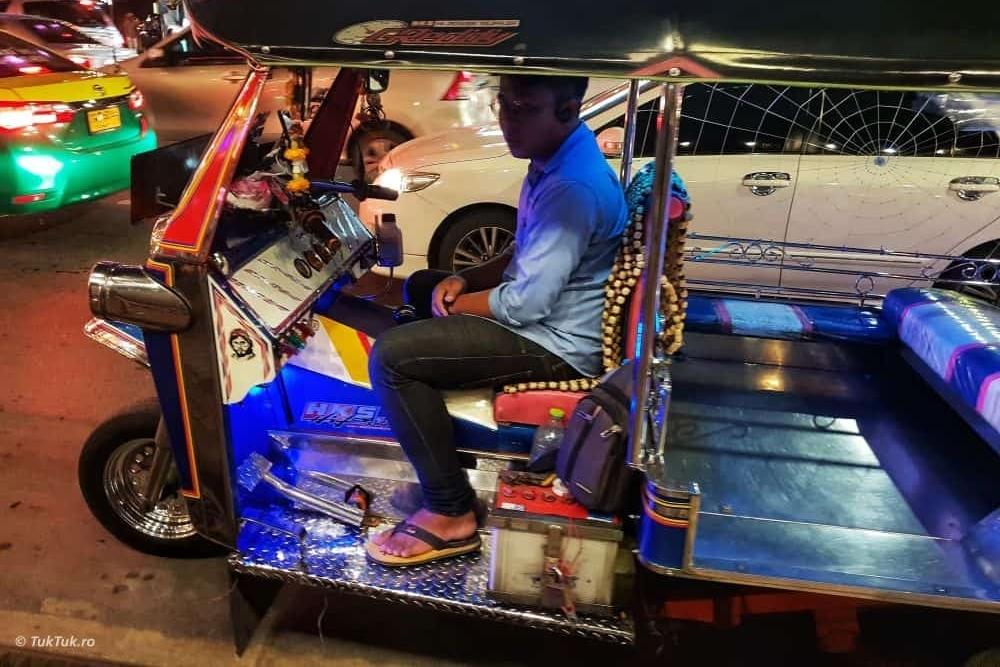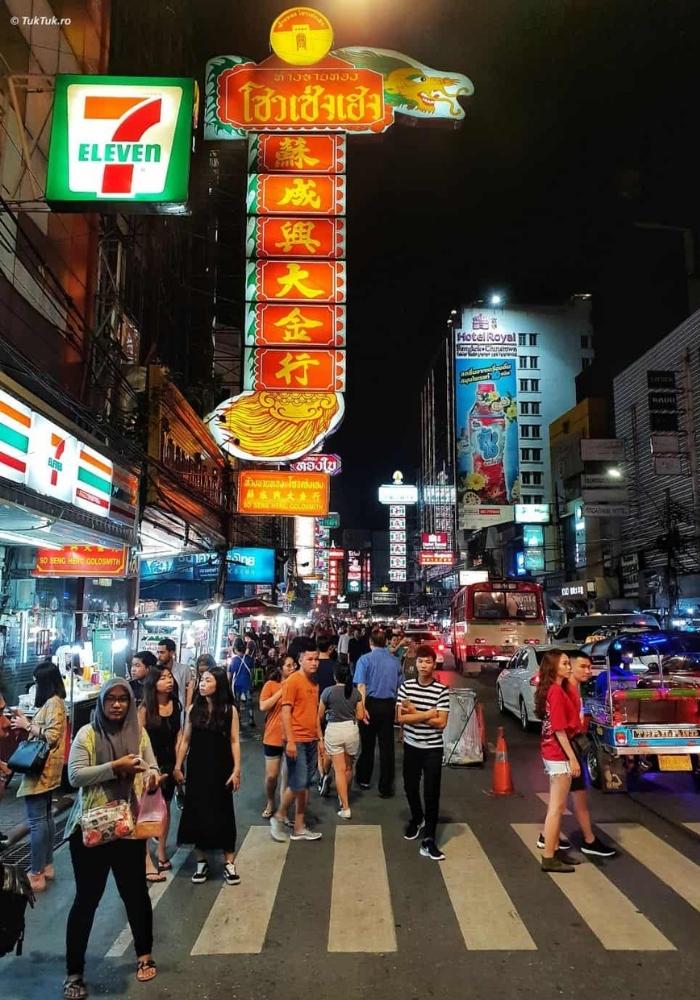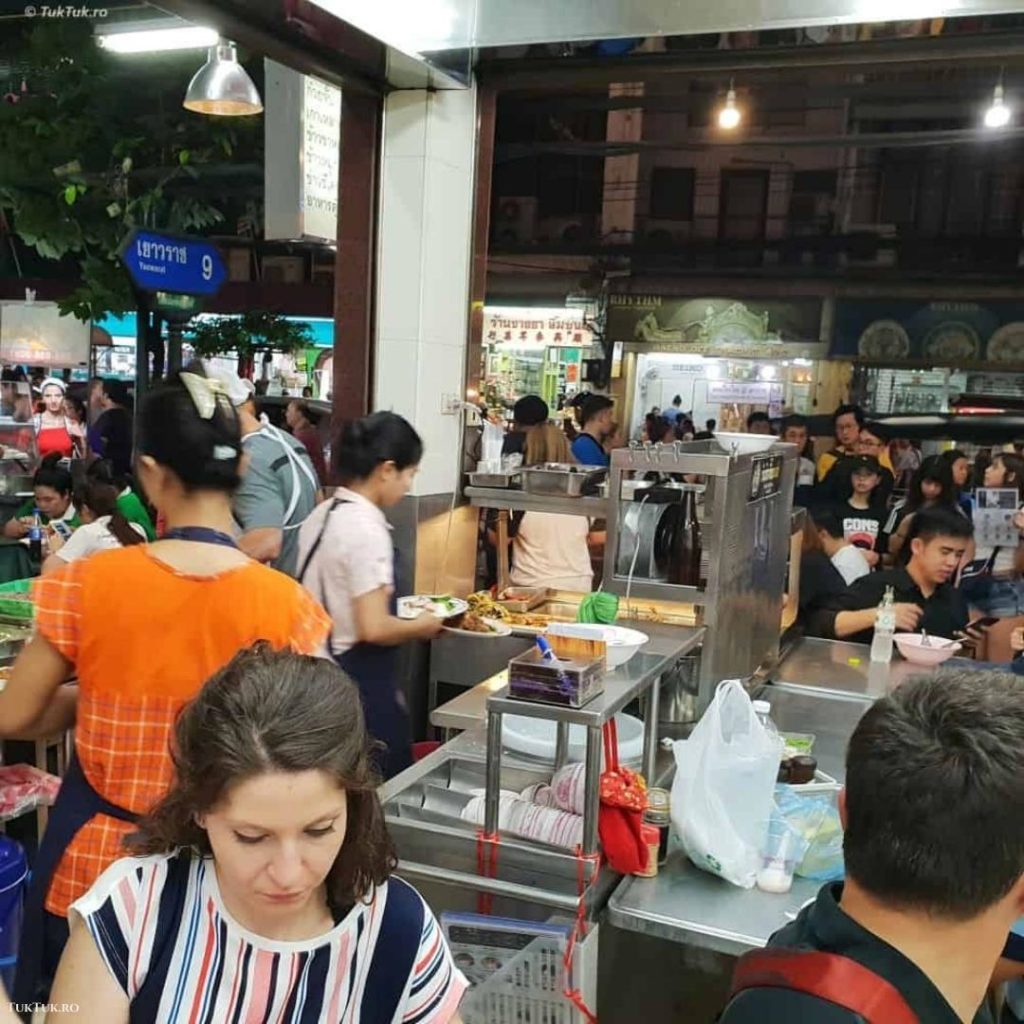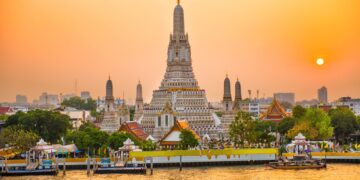I have to admit: Thailand is one of my favorite countries. There are many reasons, but out of them, I’d take three and put them nicely on the board of the TukTuk to scroll around the world: smile, color, food. If I also count that the website you are reading on has got its name after my first visit to Thailand, there should be no explanation. But we should get down to business.
In 2018 I was twice in Thailand. First, I visited Chiang Mai, the northern region, the cradle of Thai civilization and culture. The second occasion came at the invitation of the Tourism Authority of Thailand. It resulted in a visit that included two parts: the discovery of the eastern region of Trat, along with the island of Koh Chang and Chanthaburi, to which was added an incursion into Cambodia, with the temples of Angkor Wat in the foreground. You will read in other three articles about all these places, hoping that I will open your appetite to plan a visit to Thailand and Cambodia, two of the jewels of South-East Asia. But now, it’s Bangkok time!
Bangkok by night. Or how to integrate China in the Thai style
Bucharest – Istanbul – Bangkok. It’s not an easy flight, but hell! When you know you’re going to get to a cool place, you shouldn’t care either that Ataturk airport is messed up because it’s going to move to the new and controversial location, or that you’re going to fly for about nine and a half hours, with your knees poking your mouth, next to who knows what stool neighbor that takes his shoes off after having previously walked 50 kilometers through the dust of the Middle Ages (that wasn’t the case. Or… not now).
To my shame, I’d never been to Bangkok before. And I will not spend more than a night in this capital where I’m going to have to go again to understand its charm better. It is so-called “the city of angels,” “the great city of immortals,” “the magnificent city of nine precious stones,” “the seat of the king,” “the city of royal palaces,” “the house of incarnated kings,” “the city erected by Visvarkarman at the command of Indra.” Put all that together, and you’ve got the real name of Bangkok, which is — and now, a little copy-paste, hold your chair: Krungthepmahanakhon Amonrattanakosin Mahinthara Yutthaya Mahadilok Phop Noppharat Ratchathani Burirom Udom Ratchaniwet Mahasathan Amonphiman Awatansathit Sakkathattiya Witsanukamprasit. A Guinness Book name, in terms of length.
It’s not a joke: Bangkok is only the abbreviated version of the 169-character name, which transforms the capital of Thailand into one of the world’s longest-running cities. The locals call him Krung Thep, and they do well because, after a few Singha or Tiger beers, it would be a real attempt to pronounce it all, from the first to the last letter, even if you are born there.

I arrived in Bangkok in the evening, along with three other journalists – two from Poland, one from Bulgaria. I get to see the sunset among the urban skyscrapers, perched on an infinite floor in the hotel room, after which I rush to follow the local guide on a Bangkok night tour, having in mind the three strange laws that apply here: you’re not allowed to leave the house without wearing underwear, you’re not allowed to drive with your chest naked, and you’re not allowed to step, even accidentally, on their national currency – the baht. If you want to try this, do it in your home, do not experiment in Bangkok so that you do not wake up in prison.
Are you looking for a hostel in Bangkok? Try these ones, with pools or hot tubs!
What can you do best in Bangkok, if not ride with a tuk-tuk? Now is the best time to tell you about this transportation object that you have confidently stepped into since you’re reading these lines.
Tuk-tuk, this motorized car so popular in Southeast Asia and parts of Africa and even South America (more recently, it has also sprawled European capitals such as Lisbon or Amsterdam, even Bucharest), evolved from the rickshaw design that haunted the streets of Bangkok during the Second World War. Someone thought about putting an engine on a rickshaw, and that’s how the tuk-tuk was born.

Where did the name tuk-tuk come from? From the sounds the first models made. Their engine emitted a permanent tuk tuk tuk tuk which was quickly transferred into the name of the tiny vehicle. The models evolved and slowly got rid of the annoying noise with technological progress. But the name stayed.
Most tuk-tuks are produced in Thailand, but other Asian countries, especially India, have specialized in machinery production. There’s a variety of models, and if you visit Asia, you’ll see the differences between the vehicles of different countries, areas, cities immediately. Moreover, they bear different names: CNGs in Bangladesh, tricycles in the Philippines, bajaj in Jakarta, mototaxis in Central and South America, etc.
I went several times with the tuk-tuk in Thailand and India. In some cities, tuk-tuk drivers can be annoying. They call you out on the street, offering to take you from side to side, and they have an aggressive attitude. Some are docile; some think they’re real racing drivers. In Chiang Mai, I went with a tuk-tuk whose driver was dying to drive door to the door with a Mercedes, accelerating to the maximum and taking curves in a way that was at least bizarre, if not dangerous. Anywhere you take a tuk-tuk, though, don’t forget to bargain. Tell the driver the final destination and ask him how much it takes. Then negotiate: never accept the first price because the correct amount can reach half of what is proposed.
This time, the tuk-tuks were previously rented by our hosts: one green, the other blue. Tuk-tuk drivers decorate their beloved like the crazy taxi drivers in Bucharest who hang 725 windshield crosses. Their “value” is the lights. So the tuk-tuks look like Christmas trees. With beads, cords, globes, photos of relatives, and other personal artifacts.




Yaowarat Street – the street food heaven
At night, Bangkok is a light eerie. The guide takes us to Chinatown, on the main street with food: Yaowarat. Getting to Yaowarat when you’re hungry is a real masochistic gesture. And it’s not just because Yaowarat is one of the most popular food streets in the world; it’s because this is where you find yourself in front of dishes cooked by a community that’s been dealing with food for 200 years.
You wouldn’t know what to choose first: take in a row every stall the sellers offer all kinds of dishes, from “fast” ones to exotic fruits and roasted cockroaches, or enter a restaurant (which one?) to train your stomach and teach it what this Thai-Chi fusion means.
Next time I get to Bangkok, I promise to make a top 10 on this street. No matter what: local sellers, restaurants, dishes to try. Now, dizzy by the bright neons and the aromas of each stand, I wonder and follow the guide. Our half-Chinese guide knows best how things are going on. So he stopped us at a place where a long line of people formed in front of it. Okay, the whole Yaowarat seems like a long line, but here people seem like they’ve come to eat something good: Nai-Ek Roll Noodles.


Because we know people (actually our guide knows), we skip the line, like European dragons, and take a seat on a table that has just been released. In fact, we crowd in the middle of a fast-food where the kitchen is in sight, in the core of the room, the menu looks worse than an ordinary bomb, and the whizzing of those who serve tables almost instantly causes otitis.
I find out quickly, though, that Nai-Ek has been making food since the ’60s and that these people serve a thousand souls a night, all of whom seem to be leaving very satisfied. The place is included in the Michelin Guide 2019, in which we are told that Nai Ek emigrated from China in the 60s and sold his first stall noodles. They were so good that his reputation grew over the next 20 years, enough that, in 1989, he went from the street to the building where his little restaurant is functioning today.
The most beloved preparation from Nai-Ek is a spicy soup with crispy pork. It’s the one in the middle of the shot with the dishes you tried. Order fast, serve fast, eat fast. Delicious to Buddha and back. Khob khun krab, Nai-ek!




After the treat of Nai-Ek, walking on Yaowarat Street becomes easier. I test a salty pancake; I swallow a small fruit, I stop fascinated in front of a durian cutter and wonder for a thousand times how can Asians be in love with this bizarre fruit that smells like an unclogged sewerage (which is why it is forbidden in some hotels) and that tastes like onions mixed with garlic. I went over the smell and assumed you had to have a divine surprise in your mouth. You have. It just comes from the other sense, not from above.

Like everything else in the world, Yaowarat Street has an ending, too, so… jump in the tuk-tuk, and before bedtime, a review of a few places in Bangkok is welcome. Headed by the Royal Palace, where the world stops like the House of the People, because, d’oh, the kings of Siam (later of Thailand) have been here since 1782. Grand Palace is not a unique building but a complex of structures that stretch over an area of 218,000 sq.m, on the edge of the Chao Phraya River, the one that meanders through Bangkok, enhancing its charm and coloring its spirit.
You may also like: A trip to Malaysia: how to spend time in Penang, this Silicon Valley with lots of surprises




